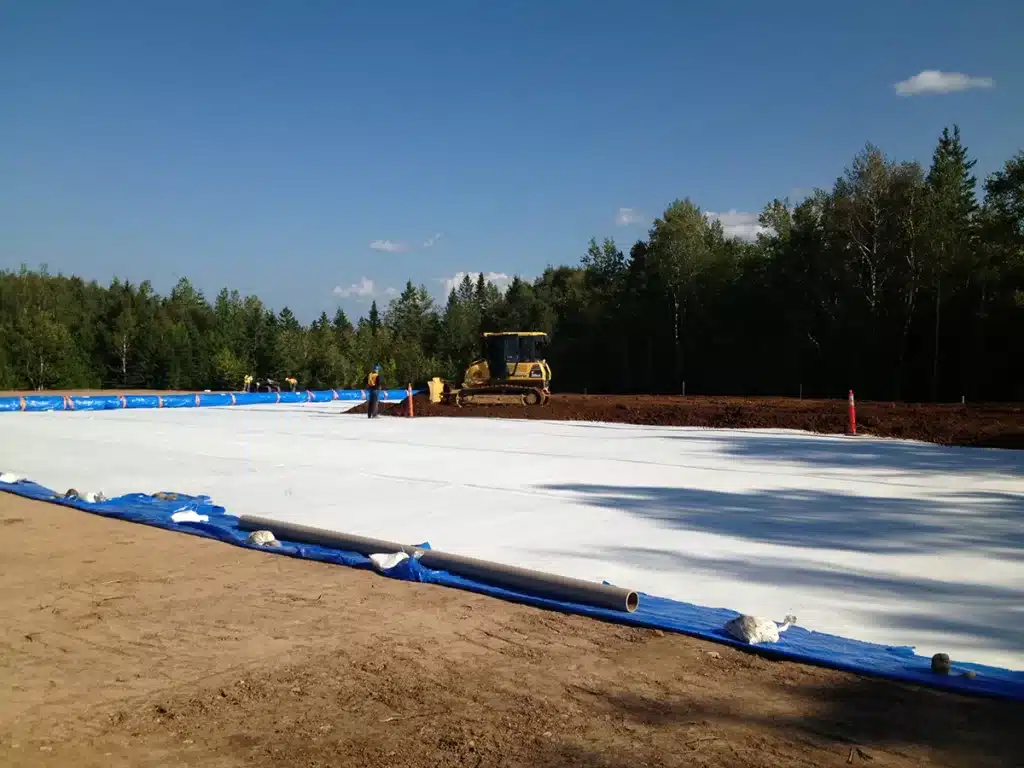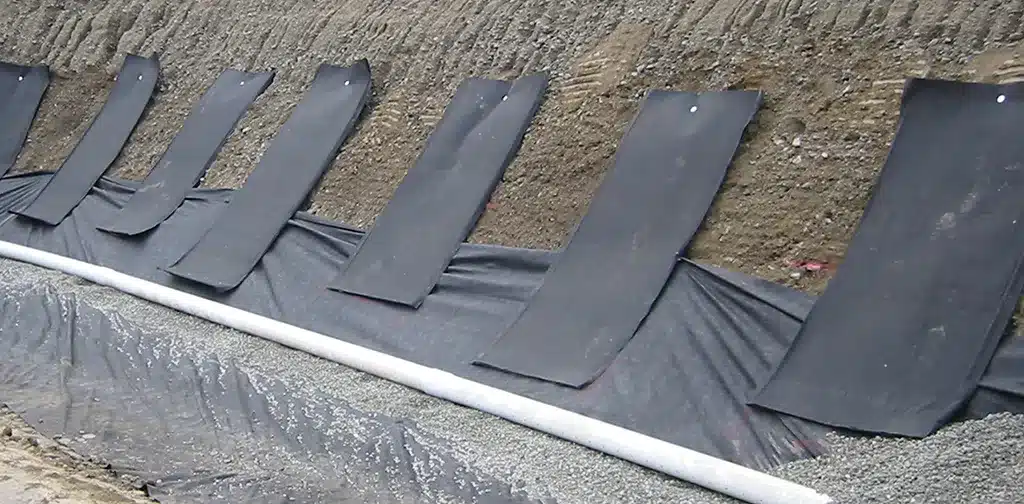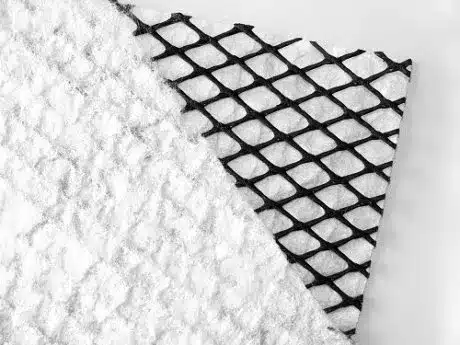+86-159 9860 6917
info@geofantex.com
geofantex@gmail.com
+86-400-8266163-44899
Geosynthetic materials are versatile construction components that find applications in a wide range of civil engineering projects. In this article, we will delve into the world of c, discussing the various types available, the major groups they belong to, and their crucial properties in construction.

How many types of geosynthetics are there?
Geosynthetics come in various types, each tailored to specific purposes and made from different materials. The key types include:
- Geotextiles: These fabric-like materials serve in roles like separation, filtration, and reinforcement and are used for tasks like erosion control, soil stabilization, and drainage.
- Geogrids: Offering structural support through rigid or flexible grids, they distribute loads over a broader area and are used in reinforcing retaining walls, roadbeds, and steep slopes.
- Geomembranes: Impermeable sheets create barriers for fluids, essential in applications such as landfill lining, pond liners, and environmental protection.
- Geonets: Resembling honeycombs, these three-dimensional structures promote drainage and are often seen in places where water flow management is critical, like landfill leachate collection.
- Geocomposites: Combining two or more geosynthetic materials to boost performance, they find applications in civil engineering tasks like pavement reinforcement and erosion control.
What are the functions of geosynthetics?
Geosynthetics can be grouped into four major categories based on their primary functions:
- Separation: Geosynthetics, like geotextiles, prevent the mixing of dissimilar soil materials, ensuring that each layer retains its structural integrity. This separation helps in road construction and prevents contamination in various applications.
- Reinforcement: Geosynthetics, such as geogrids, increase the stability and load-bearing capacity of soil or structures. They are used in retaining walls, embankments, and roadways.
- Filtration: Geosynthetics with filtration capabilities, like geotextiles, allow water to pass while retaining soil particles. This prevents clogging and is useful in drainage systems and erosion control.
- Containment: Geosynthetics, including geomembranes, create barriers to contain liquids, gases, or pollutants. They are essential in applications such as waste containment and reservoir lining.

What are the four properties of geosynthetic material and its application in construction?
Geosynthetic materials have five key properties that play vital roles in construction:
- Permeability: This property defines how well geosynthetics allow or block fluid flow. Geotextiles with controlled permeability are used in drainage to prevent soil erosion.
- Strength: The strength of materials like geogrids bolsters the stability of civil engineering projects, making them essential for road construction and retaining walls.
- Durability: Geosynthetic materials need to endure environmental conditions and resist deterioration over time. Highly durable geomembranes, for instance, are used for long-term hazardous waste containment.
- Compatibility: Ensuring that geosynthetic materials work seamlessly with other construction components is crucial. Geocomposites are engineered for compatibility with various materials, making them versatile in construction.
- Degradation Properties: Understanding how geosynthetics degrade over time is essential for long-lasting construction. Monitoring their degradation properties is critical for ensuring the ongoing effectiveness of geosynthetic solutions.
What are the environmental benefits of using geosynthetic materials in construction?
Using geosynthetic materials in construction offers several environmental benefits, which contribute to sustainability and efficiency in construction projects. Here are some of the key advantages:
- Erosion Control: Geosynthetics are used in slope stabilization and erosion control applications. They can help prevent soil erosion caused by water runoff, protecting the land and reducing sedimentation in nearby water bodies.
- Water Conservation: In projects like artificial ponds, lakes, or irrigation systems, geosynthetic liners are used to prevent water loss due to seepage. This helps in water conservation, especially in arid regions or in applications where water retention is critical.
- Resource Efficiency: The use of geosynthetics can lead to a reduction in the use of natural resources such as gravel and sand, which are traditionally used in construction. This not only conserves these resources but also reduces the environmental impact associated with their extraction and transportation.
- Carbon Footprint Reduction: By improving construction efficiency and reducing the need for traditional construction materials, geosynthetics can contribute to a lower carbon footprint for construction projects. The production and transportation of geosynthetic materials generally emit less CO2 compared to the extraction, processing, and transportation of natural materials.
- Durability and Longevity: Geosynthetic materials are designed for long-term performance, which means that structures built with these materials require less maintenance and are less likely to need premature replacement. This reduces the environmental impact over the lifespan of the construction project.
- Waste Management and Containment: Geosynthetic liners and covers are used in landfills and waste containment facilities to prevent leachate from contaminating groundwater and the surrounding environment. This application is crucial for minimizing the environmental impact of waste disposal.
- Recyclability: Some geosynthetic products are made from recycled materials and can be recycled at the end of their service life, contributing to a circular economy and reducing waste.
- Vegetation Support: In green infrastructure and landscaping projects, geosynthetics are used to support soil and vegetation, promoting the integration of natural elements into urban environments and helping to maintain biodiversity.
- Mitigation of Natural Disasters: Geosynthetics play a role in mitigating the effects of natural disasters, such as floods and landslides, by reinforcing structures and preventing soil erosion. This not only protects the environment but also reduces the economic and social impact of such events.
In summary, the use of geosynthetic materials in construction offers substantial environmental benefits, ranging from resource conservation and erosion control to the reduction of carbon emissions and support for biodiversity. These advantages make geosynthetics an important component of sustainable construction practices.
In conclusion, geosynthetic materials are invaluable in civil engineering and construction due to their versatile applications and performance-enhancing properties. Understanding the various types and their specific functions can greatly benefit engineers and builders in their projects.



Get Free Sample
We’ll respond as soon as possible(within 12 hours)





















